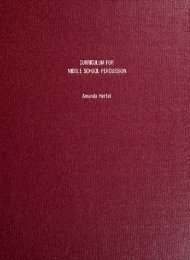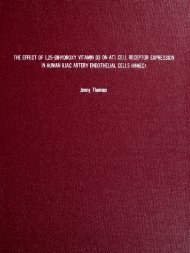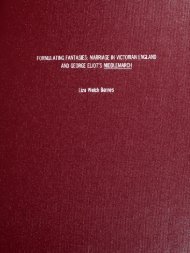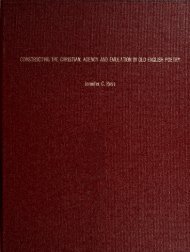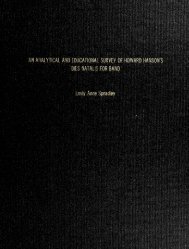Motionless as an Idol - Columbus State University
Motionless as an Idol - Columbus State University
Motionless as an Idol - Columbus State University
- No tags were found...
You also want an ePaper? Increase the reach of your titles
YUMPU automatically turns print PDFs into web optimized ePapers that Google loves.
Bullock 30acknowledge that *'[n]o region in the country [...] w<strong>as</strong> more dominated by nor moredefined in terms of religion,'" <strong>an</strong>d that religion w<strong>as</strong> unquestionably Protest<strong>an</strong>t (2). SamuelS. Hill also comments on this phenomenon of Southern culture saying, "no single featureof the southern religious picture is more revealing th<strong>an</strong> the absence of pluralism <strong>an</strong>ddiversity from the popular denominations'" (xvii). The practice of <strong>an</strong>y religion outside ofmainstream Protest<strong>an</strong>tism, specifically Catholicism, contributed to a conflict between thecompeting heritage of each institution, both Catholicism <strong>an</strong>d Protest<strong>an</strong>tism, which isproudly displayed <strong>an</strong>d considered inherent through their daily m<strong>an</strong>ifestations. Thedifference between these two heritages is obvious in m<strong>an</strong>y ways, but for the c<strong>as</strong>ualobserver, the exterior of their buildings, <strong>as</strong> aptly described by Jon W. Anderson <strong>an</strong>dGwen Kennedy Neville, is enough to distinguish between them:Catholic churches throughout the South st<strong>an</strong>d spatially <strong>an</strong>d stylistically apart frommainstream Protest<strong>an</strong>t one. Their common red-brick-<strong>an</strong>d-pl<strong>as</strong>ter gothic stylest<strong>an</strong>ds apart not just from the neocl<strong>as</strong>sical 'colonial 1styles favored by Protest<strong>an</strong>tchurches; itst<strong>an</strong>ds in a period of renewed counterreformation in the nineteenthcentury that obliterated previous styles <strong>an</strong>d w<strong>as</strong> itself suppl<strong>an</strong>ted by moreecumenical, 'modern' styles [...] (24)Ifind this p<strong>as</strong>sage to be signific<strong>an</strong>tly parallel to the description of Miss Emily's house inthe story, <strong>an</strong>d its architecture communicative of me<strong>an</strong>ing similar to that of the Catholicchurches in the South. Both Miss Emily <strong>an</strong>d Catholics are housed in buildings that revealthrough their facades just how much they are not part of the mainstream society, makingit all the e<strong>as</strong>ier for their respective communities to pinpoint their difference <strong>an</strong>d penalizethem for it. I do not think <strong>an</strong> affiliation between Miss Emily <strong>an</strong>d Catholicism is necessary



